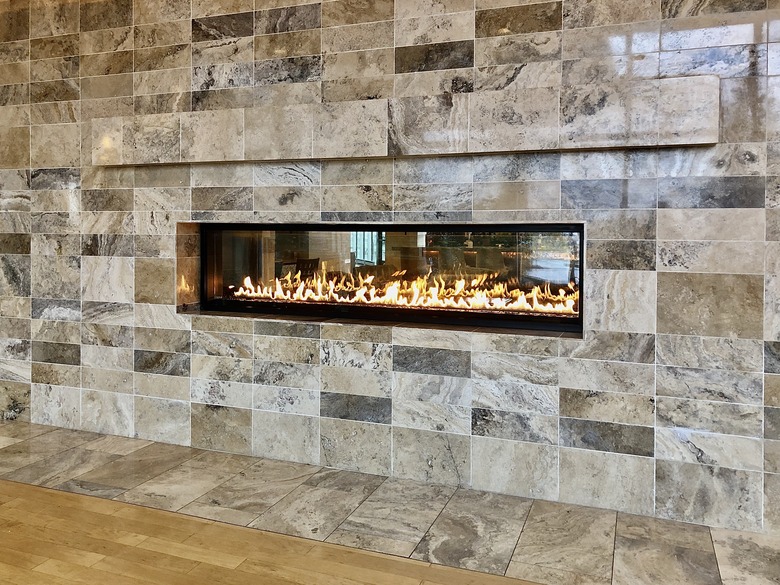The Gas In My Fireplace Is Very Yellow And Producing Black Smoke
We may receive a commission on purchases made from links.
A gas fireplace eliminates the work involved in lighting a wood log and getting a fire started. However, gas fireplaces are not entirely task- and trouble-free. If the flame in your fireplace changes from its normal blue color to yellow or the fireplace starts emitting smoke, don't ignore these symptoms. At their most serious, yellow flames and black smoke may signal the presence of high levels of carbon monoxide, a potentially lethal gas. At the least, they are signs that your fireplace needs servicing to keep your family and your home safe.
Yellow Instead of Blue Flame
Yellow Instead of Blue Flame
Gas companies typically show a blue flame on their logos and television commercials. That's for a good reason. A "healthy" and correct gas flame should burn blue. A yellow flame can be an indication that the burner for the gas logs is dirty or a sign of another combustion-related problem. As a result, gas and air are not mixing properly. That causes the flame to burn with a yellow color instead of blue. Contact your local natural gas provider and to schedule an inspection of your fireplace. In the meantime, stop using the fireplace until it is checked out thoroughly.
The Appearance of Black Smoke
The Appearance of Black Smoke
If your gas fireplace is emitting black smoke into the room, you need to check the position of the logs and the screen and have your fireplace serviced. In most cases, black smoke is a sign of a ventilation problem. When gas logs are not aligned properly, they can cause the gas flames to produce smoke and soot. Black smoke also can be a sign of problems with your damper, flue, or draft. The fireplace damper may not be open enough, the flue may be blocked and/or the draft flow may be inadequate. Contact a technician to have your fireplace serviced.
Older Gas Fireplaces
Older Gas Fireplaces
If you have an older gas fireplace or a gas starter that was manufactured prior to 1980, it may not be equipped with an OSD (Oxygen Safety Detection) device. An OSD system regulates the flame characteristics so the flame maintains a consistent blue color. An OSD detector will also shut off the pilot if it senses a problem with the flame. Upgrade or retrofit your fireplace, if possible, to add an OSD detector; this must be done by a licensed fireplace technician.
Ventless/Vent-Free Fireplaces
Ventless/Vent-Free Fireplaces
Smoke issues can arise more frequently with ventless, or vent-free, fireplaces. When a fireplace has no chimney or vent to exhaust the smoke from out of the home to the outdoors, the smoke has nowhere to exhaust itself other than inside your home. As a result, ventless fireplaces exhibit ventilation problems more frequently than vented fireplaces that work in conjunction with a chimney system or exterior ventilation pipes. When the smoke from a ventless fireplace is black, that often signals a combustion problem. Have your fireplace inspected and serviced immediately.
Get a Carbon Monoxide Alarm
Get a Carbon Monoxide Alarm
Whenever your home includes something that can create a carbon monoxide leak, it's just as important to have carbon monoxide alarms as it is to have smoke alarms. Place a carbon monoxide alarm in the area containing your gas fireplace, following the manufacturer's installation instructions, and be sure to buy one with a digital readout so that, if the alarm sounds, you can see how much exposure you've suffered.
